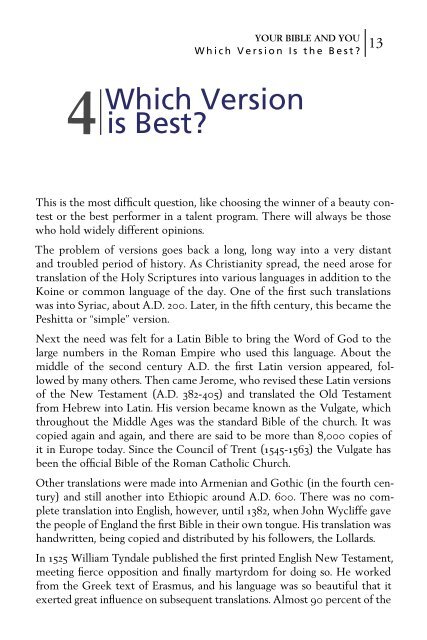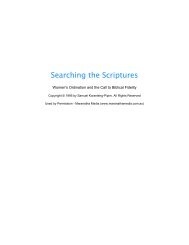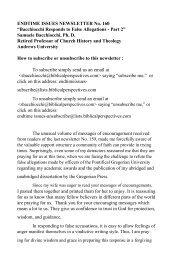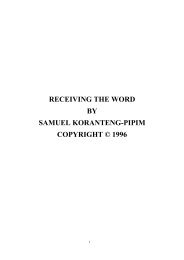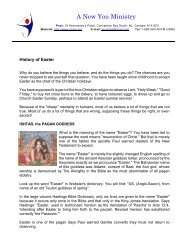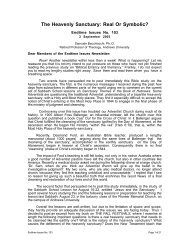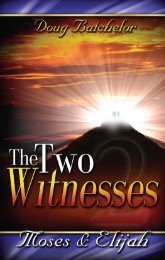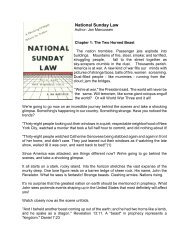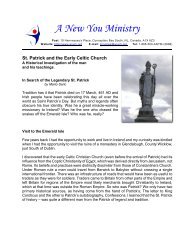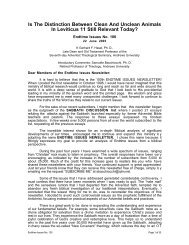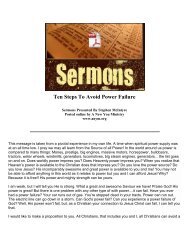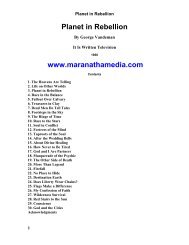Create successful ePaper yourself
Turn your PDF publications into a flip-book with our unique Google optimized e-Paper software.
YOUR BIBLE AND YOU<br />
W h i c h V e r s i o n I s t h e B e s t <br />
13<br />
4<br />
Which Version<br />
is Best<br />
This is the most difficult question, like choosing the winner of a beauty contest<br />
or the best performer in a talent program. There will always be those<br />
who hold widely different opinions.<br />
The problem of versions goes back a long, long way into a very distant<br />
and troubled period of history. As Christianity spread, the need arose for<br />
translation of the Holy Scriptures into various languages in addition to the<br />
Koine or common language of the day. One of the first such translations<br />
was into Syriac, about A.D. 200. Later, in the fifth century, this became the<br />
Peshitta or “simple” version.<br />
Next the need was felt for a Latin <strong>Bible</strong> to bring the Word of God to the<br />
large numbers in the Roman Empire who used this language. About the<br />
middle of the second century A.D. the first Latin version appeared, followed<br />
by many others. Then came Jerome, who revised these Latin versions<br />
of the New Testament (A.D. 382-405) and translated the Old Testament<br />
from Hebrew into Latin. His version became known as the Vulgate, which<br />
throughout the Middle Ages was the standard <strong>Bible</strong> of the church. It was<br />
copied again and again, and there are said to be more than 8,000 copies of<br />
it in Europe today. Since the Council of Trent (1545-1563) the Vulgate has<br />
been the official <strong>Bible</strong> of the Roman Catholic Church.<br />
Other translations were made into Armenian and Gothic (in the fourth century)<br />
and still another into Ethiopic around A.D. 600. There was no complete<br />
translation into English, however, until 1382, when John Wycliffe gave<br />
the people of England the first <strong>Bible</strong> in their own tongue. His translation was<br />
handwritten, being copied and distributed by his followers, the Lollards.<br />
In 1525 William Tyndale published the first printed English New Testament,<br />
meeting fierce opposition and finally martyrdom for doing so. He worked<br />
from the Greek text of Erasmus, and his language was so beautiful that it<br />
exerted great influence on subsequent translations. Almost 90 percent of the


